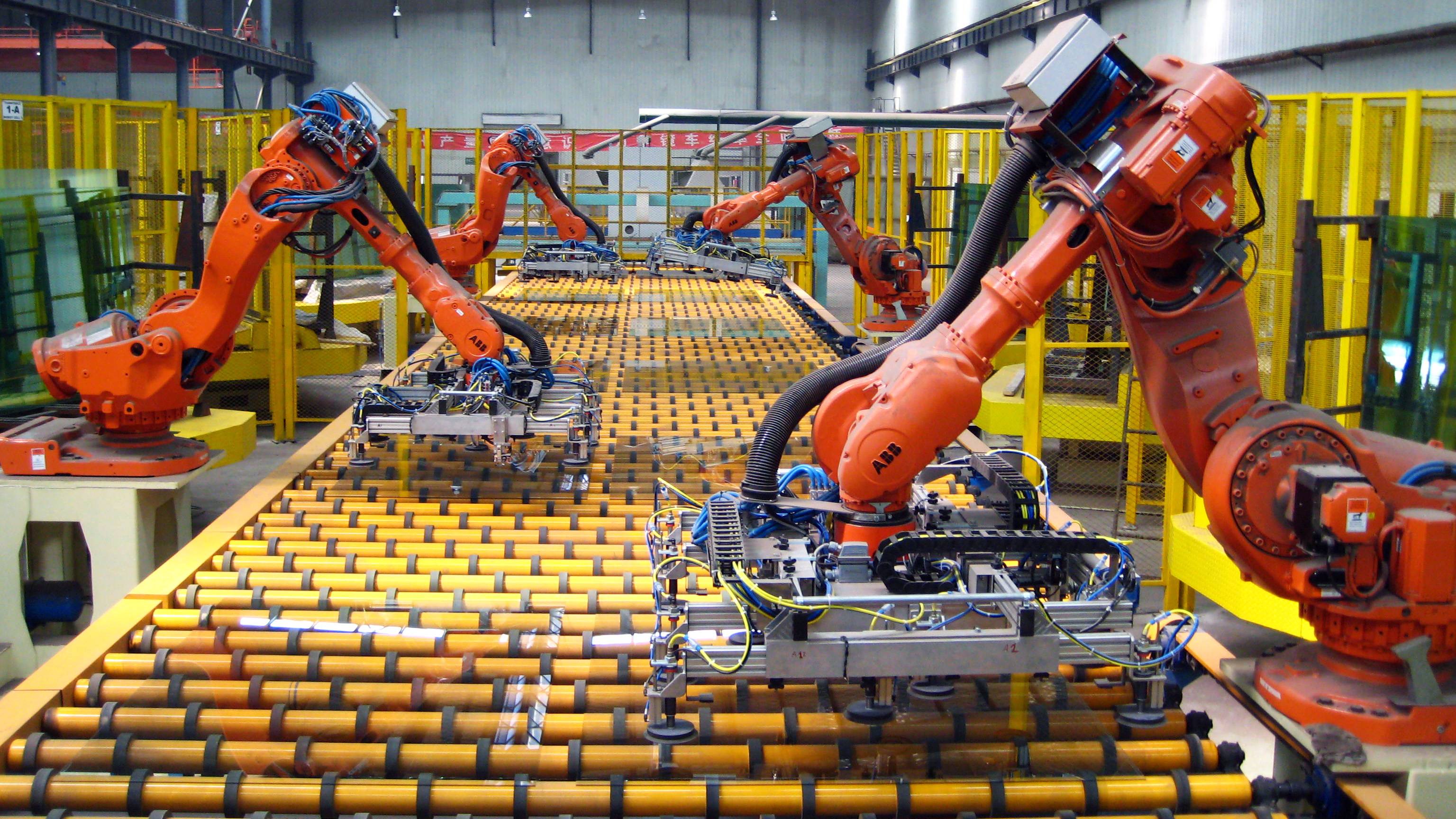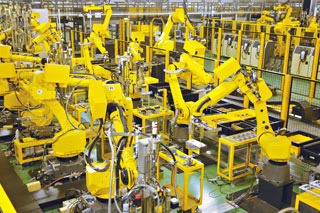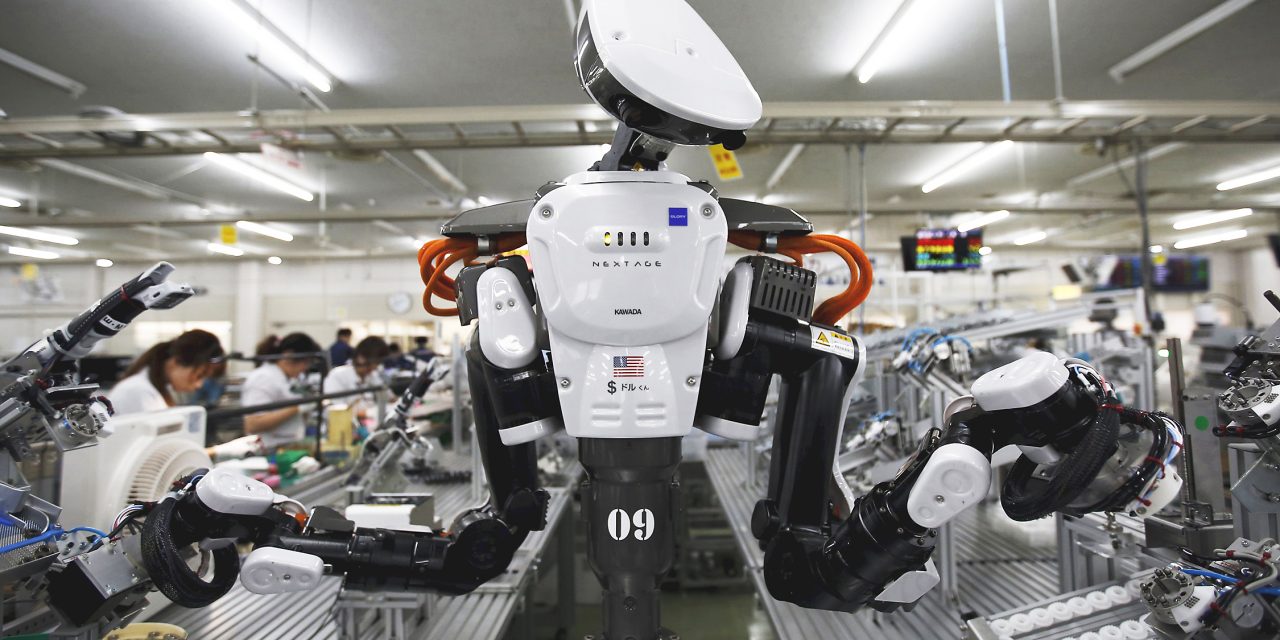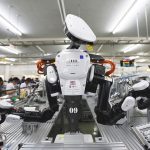President Trump vows to bring back jobs to the U.S. by taking aim at global trade and outsourcing, but several reports indicate that a much bigger threat to employment consists of automation and robotics in the workplace.
A largely overlooked study released earlier this month found that half of all activities conducted on the job by employees in the U.S. could be performed using automation that relies on current technology.
The McKinsey Global Institute found that the industries most likely to make the switch to machines are manufacturing, food service and retail, but the potential for automation is also abundant in the office setting, representing a significant threat to white-collar workers and professionals.
Trump could get a quick lesson on the coming revolution from Andrew Puzder, the president’s pick for labor secretary and chief executive of CKE Restaurants, which includes Hardee’s. Puzder praised the virtues of robots over human employees in an interview with Business Insider in March.

In Michigan, experts warn that the political emphasis on returning manufacturing to its role of decades ago flies in the face of a global economic evolution.
“The lesson we need to learn, and align with, is that what made us prosperous in the past, won’t in the future,” Lou Glazer, founder of the Michigan Future Inc. research group, wrote recently. “But learning and acting on that lesson is made harder when politicians, of both parties, campaign on bringing back the old factory-based economy. No matter what they promise and no matter what their agenda is, manufacturing as a proportion of the American workforce will continue to structurally decline as it has for a half century.”
Automation, not globalization, is the job killer
Most of the blue-collar job losses since the 1970s, according to experts, are due to increasing automation, not globalization and trade.
The president has said he wants Apple to create an American iPhone manufactured entirely in the U.S. But technology writer Jason Perlow points out that Taiwan-based Foxconn, the primary contractor that builds the popular smartphone, has already made moves toward a fully automated manufacturing process. It has deployed 40,000 “Foxbots” at its three main factories in China. That will set a new industry standard.
Another prime example of what’s to come is the approach taken by Amazon. Perlow wrote last week that the online retail company purchased a robotics firm in 2012 and uses more than 45,000 robots in its warehouses across the U.S.
What’s next are self-driving trucks to handle long-haul deliveries to those warehouses and, eventually, drones that drop off packages at your front door.
Man vs. machine has been a recurring theme for decades in the science fiction genre, but factory workers for the Carrier air conditioning manufacturer in Indiana received a lesson in economic reality in December.

Greg Hayes, CEO of the parent company, United Technologies, told MSNBC that Mexican blue-collar labor is about 80 percent cheaper while the workers are much more dedicated to their jobs than their American counterparts.
To make up for that gap, Hayes said, a $16 million investment in automation is now in the works to drive down the costs in the Indianapolis factory. The goal is to rely on machines, not men and women.
The McKinsey study that was released this month, a follow-up to a report in July, said similar decisions will be made by a wide array of companies:
“Recent developments in robotics, artificial intelligence, and machine learning have put us on the cusp of a new automation age. Robots and computers can not only perform a range of routine physical work activities better and more cheaply than humans, but they are also increasingly capable of accomplishing activities that include cognitive capabilities once considered too difficult to automate successfully, such as making tacit judgments, sensing emotion, or even driving. Automation will change the daily work activities of everyone, from miners and landscapers to commercial bankers, fashion designers, welders, and CEOs.”
Women especially at risk
A similar study out of the Oxford Martin School on the race toward smarter machine technology puts the eventual replacement rate for U.S. workers at 47 percent. Robots and intelligent machines “will eventually tend to our medical needs, serve the disabled and elderly, and even take care of and teach our children,” the report concluded.
The World Economic Forum produced a recent report that said artificial intelligence and machine learning, robotics, nanotechnology, 3D printing and genetics and biotechnology “are all building on and amplifying one another.”
These technological changes will create new kinds of jobs while displacing others, the WEF concluded. According to Foreign Policy magazine, the report warned that women will lose their place in the workforce at a higher rate due to current concentrations in certain occupations — office and administrative jobs — and in sectors where gender imbalances already prevail, such as architecture, engineering, computers, math, and manufacturing.
The service sector, such as health care and education jobs, is considered safest in the short term. The McKinsey study predicted that 51 percent of work tasks would be handled by machines and technology by 2035, at the earliest.

The bottom line is that workers in a variety of sectors can’t compete with what’s coming, regardless of their pay level or benefits. Automation and robotics cuts costs while it increases efficiency, quality and productivity. A report by USA Today last fall found that means fewer jobs than companies needed to do the same work years ago.
“Even if manufacturing exploded, there’s no reason to suppose that the new factories would look anything like the ones even from 2005,” Michael Hicks, an economist at Ball State University in Muncie, Ind., told the newspaper.
The robotics employed on modern auto assembly lines is frequently cited to explain this on-the-job evolution. But the U.S. steel industry may present an even more stark example.
Politicians ‘not telling the truth’
Most steel made in the U.S. today is recycled – existing steel is melted down to form new metal. Recycling plants, because they are highly automated, need hundreds of employees, not the thousands who worked at ore-based steel plants in the 1970s.
As a result, the U.S. steel industry lost 400,000 people, 75 percent of its workforce, between 1962 and 2005. But its output did not decline, according to a study published in the American Economic Review last year. The reason was a new technology called the minimill.

Sen. Ben Sasse, a Nebraska Republican, told Business Insider that blue-collar workers should be warned about the coming changes, which will force most of them to find a new way to make a living. “Politicians are not good at telling the truth,” Sasse said, but they should be honest with Americans about the changing dynamics of the job market.
Another Republican, Ohio Gov. John Kasich, offered a similar message in another Business Insider piece on automation. He bluntly stated that the steel mills of the past are not coming back to Youngstown, and the jobs of the future will require a higher degree of education:
“… For the best interest of the people of our state, having a big mix of technology, healthcare, IT, financial services, and (advanced) manufacturing is the ticket. To put all of your eggs in one basket is silly. We did that for a long time and I don’t think it’s very smart.”







